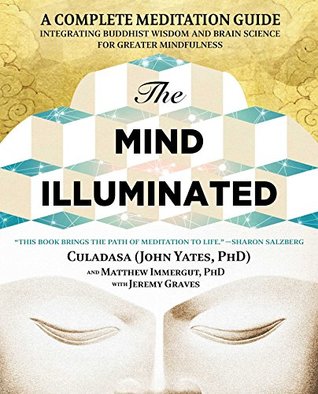More on this book
Community
Kindle Notes & Highlights
While bliss, joy, tranquility, and equanimity are delightful, they are also transitory and easily disrupted by sickness, aging, and difficult life circumstances.
Although pain and pleasure are an inevitable part of human life, suffering and happiness are entirely optional.
equanimity
Put another way, what they needed but didn’t have was a clear map of the process.
meditation also produces many other very useful “mundane insights,” such as a better understanding of our own personality, social interactions, human behavior in general, and how the everyday world works. It can give us flashes of creative brilliance or intellectual epiphanies that solve problems or help us make new discoveries.
Attention moves spontaneously in three different ways: scanning, getting captured, and alternating.
Attention analyzes experience, and peripheral awareness provides the context. When one or the other doesn’t do its job, we misinterpret, overreact, and make poor decisions.
Five Hindrances: Worldly Desire, Aversion, Laziness and Lethargy, Agitation Due to Worry and Remorse, and Doubt.
The obstacles at this Stage are forgetting, mind-wandering, monkey-mind, and impatience.
Our natural tendency is to quickly return to the breath, often forcefully and with self-judgment. This reaction is typical of our approach to everyday tasks. We rush to get back on track. During meditation, however, if you return to the breath as soon as you realize you’ve lost it, you’ll miss a key opportunity for training the mind.
Simply take a moment to enjoy and appreciate “waking up” from mind-wandering.
Also, avoid becoming annoyed or self-critical about mind-wandering.
In fact, moving through all Ten Stages depends on positively reinforcing, cultivating, and strengthening introspective awareness. Thus, beginning in this Stage, always appreciate it whenever it arises, and make satisfaction and pleasure a cornerstone of your whole practice.
The mind is a collective of mental processes operating either through consensus, or through a very temporary dominance of one process over the others.
If you didn’t deliberately and consciously alter your breath, don’t fall into the common trap of taking ownership of something you didn’t do. When the breath changes due to unconscious processes (even though it suits your conscious purposes), “you” didn’t do it, so don’t interfere.
Once you can perceive all major points in the breath cycle clearly and vividly, you need a bigger challenge. Next, you’ll practice recognizing the individual sensations that make up each in- and out-breath. First, carefully observe the sensations between the beginning and end of the in-breath until you can recognize three or four distinct sensations every time. Continue to observe the rest of the breath cycle just as clearly as before. When you can consistently recognize several sensations with every in-breath, do the same with the out-breath. Your intention will be to follow the breath with
...more
When you find the mind agitated and there are more distractions, ask yourself: Is the breath longer or shorter, deeper or shallower, finer or coarser than when the mind is calm? What about the length or depth of the breath during a spell of drowsiness? Do states of agitation, distraction, concentration, and dullness affect the out-breath more or in a different way than they do the in-breath? Do they affect the pause before the in-breath more or less than they affect the pause before the out-breath?


